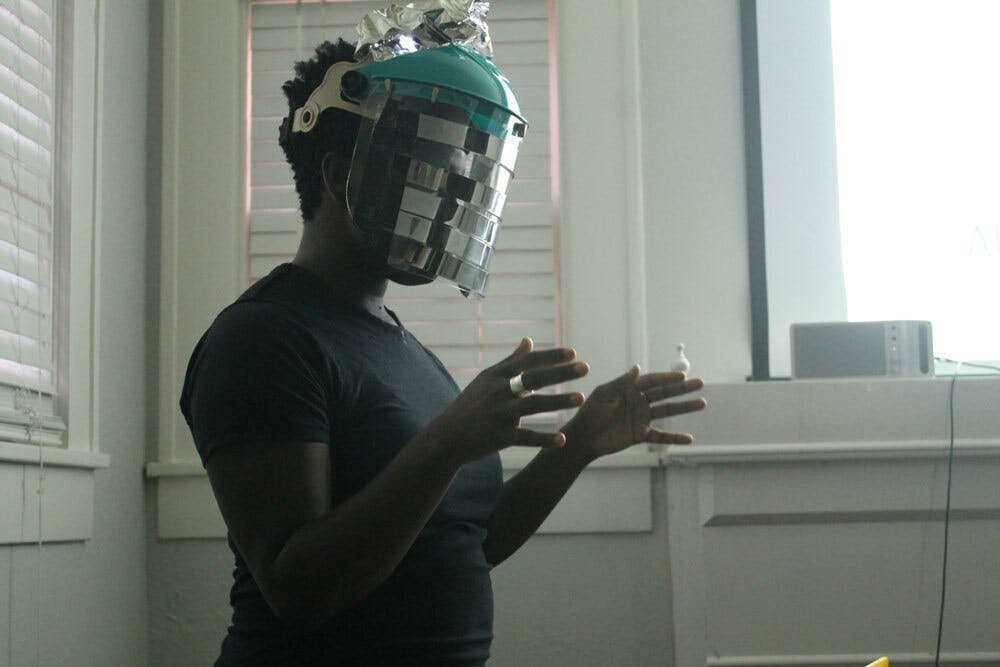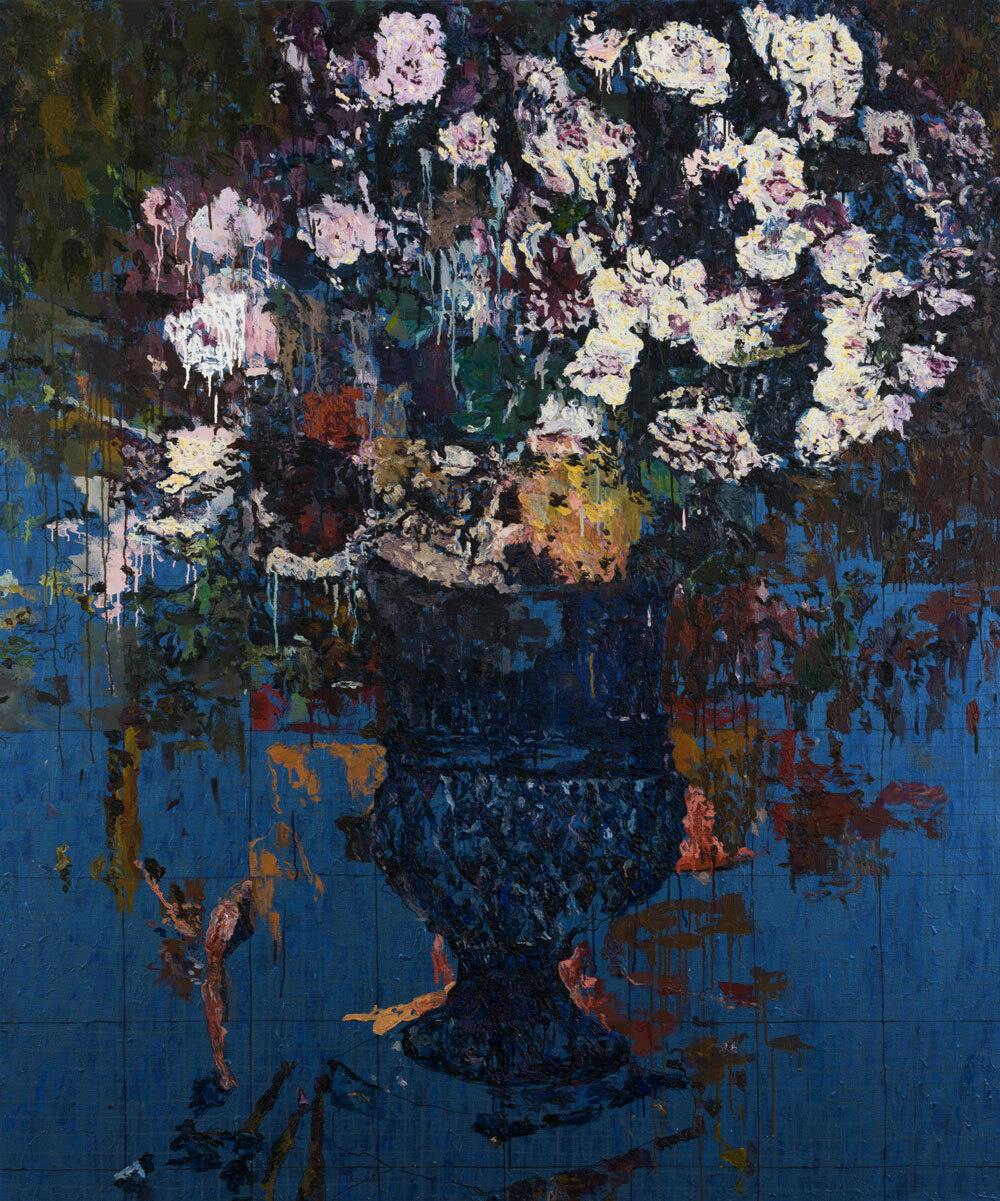2016–17 Artists in Residence: Autumn Knight, Julia Phillips, and Andy Robert
A core component of the Studio Museum in Harlem's mission and history, the Artist-in-Residence program provides each artist with studio space, a stipend and the opportunity to exhibit at the end of the eleven-month residency. Here, 2016–17 artists in residence Autumn Knight, Julia Phillips and Andy Robert share a little bit about their practices and what inspires them.
Autumn Knight
Well, there was that time that I fell off a basket at a grocery store and Blacked out. When I was revived, I told the doctor that I was reaching for the pink cookies. The ones with the frosting and sprinkles. And the time I called a mechanical puppet a “motherfucker” for his poor performance skills at my fifth birthday party. Or the moment I had to respond quickly to why my elementary classmate told me she didn’t like Black people. Oh, and the fire.
And there is now the use of terms such as “projective identification” or “performance” to define and script this material into coherence and worthiness. The activity I produce is therapy, dance, theater, encounter, sculpture and collaboration. What exists as a thread throughout a series of performances, installations and video works is essentially experimental improvisation, an exhaustion of the possibilities of liveness.
My process builds on assessing the texture of relationships and exploiting/exposing the dirty absurdities and inaccuracies that lie in those bonds. Basically, where’s the lie? The inclusion of humor in my work is nonnegotiable. It is the place to dialogue openly with death and pain. (I think?) The output attempts to produce a visual language and feeling that my mama/yo mama can understand, but also lends itself to criticality (or not).
The task: Observe. Pervert. Relay. Frustrate. Point to. Stunt.


Autumn Knight, Auditive Chamber (performance view), 2014. Courtesy the artist. Photo: Robert Pruitt
Julia Phillips
I invent tools and apparatuses of imaginary functions. The objects relate to the human body and I often create them with an interaction between two bodies in mind. My primary medium is ceramics, which I combine with metal structures and hardware that hold the ceramics in place. The functions of each object are ambiguously revealed by the title, but also by some identifiable body casts, such as handles, footprints or partial masks, and by mechanical adjustments, such as wing nuts, hinges and straps. The titles suggest subject-object relationships—Regulator, Positioner, Observer or Objectifier—the “doer” and the “done-to.” These titles and relations that I intend to visualize through objects are metaphors and can be understood on a broader sociopolitical level. For example, the concept of “regulation” can happen physically between two bodies, but also applies to gender and colonial relations.
Because the functionality of an object serves as a metaphor and a play with imagination, I think of the tools and apparatuses as being in a passive state. They are nonactivated devices, almost like domestic tools hanging in a broom closet. The fragility of ceramics also negates actual use.
The functions of the objects remain unresolved. The oppressive and forceful elements in the objects hint at the power dynamics between two entities. In the larger apparatuses the tile elements often carry glaze traces that indicate a specific position of an absent body.
I like it when viewers approach my objects like crime scenes and make assumptions about potential use. Viewers are invited to identify with either side of the subject-object relationships, which brings them closer to the function and hence the meaning of the work.


Julia Phillips, Positioner, 2016. Courtesy the artist and Campoli Presti
Andy Robert
When in the studio I allow things to permeate; my paintings reflect life and speak to all its complexities and contradictions. I see a world of mass communication yet increased voicelessness, and see art as a viable tool, mode and form of critical reflection capable of addressing this paradox. I am looking at things in our community. I am thinking about conversations we have publicly as a nation, and the ones we have in private.
The documentation and representing happening here is discursive, and it’s experimental—it’s one of voice, it’s narrative and attitude, it’s a worldview. It’s both Black and abstract, diasporic and of many people. It’s life on the street and viral, and simultaneously our joys and our concerns. And I reflect on economic debt as linked invariably to a brokenness of being. I am interested in what happens to things when they come into proximity and/or collide, and view painting from observation and various sources—photographic source material and documents—as a way to address fragmentation as a state of being and inequality of wealth and power. Snapshots, photo albums and found imagery also act as points of reference, rough drafts, a first take at an idea for a painting.
I’m balancing abstraction with recognizable imagery. I’m working at the edge of representation and interested in slowing down recognition, and enjoy the experimentation and tinkering that comes with painting pictures. I believe images are to be taken apart and put back together. This allows for elements of chance and contingency. I find poetry in how things come together—in the dérive (“drift”)—in getting lost, in texture, in roughing the surface, in the gravity of drips and runs. There is tension and contrast between gridded systems, layering, process and line, between drawing, gesture and the phenomenal experience of color and paint.
Making paintings takes time. Like a form of study, it happens slowly. This experimental, improvisational approach takes my hand—the artist’s body—history and our contemporary moment into account. Images come against the body. Thus rendered variations in finish, surface, texture and detail emphasize friction in the layering, the breaking of the picture plane, and the shift of perspective and time. The act of painting is reflective, it’s spending time with. It’s the fragmentation and blur of reflection(s) and memory. It’s being in dissonance. It’s taking something apart to put it back together; you risk breaking it. And in the process a different kind of play happens— slowed down, something else is learned. Something unexpected is seen, translated and made anew. A provocation that the viewer must confront and come to terms with. It is in the discursive act of painting pictures, in its transformative power and shifts that I ask, “What is at play?”


Andy Robert, Aiyana (Flower Arrangement), 2015. Courtesy the artist and Hannah Hoffman Gallery, Los Angeles